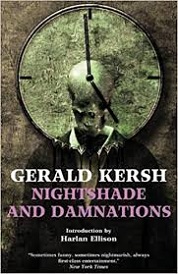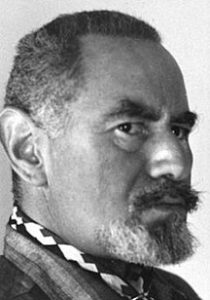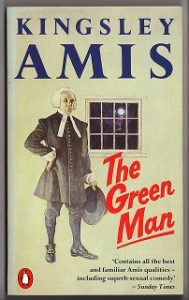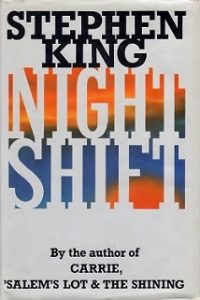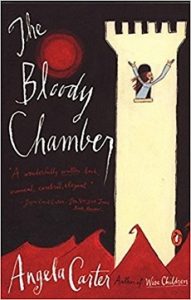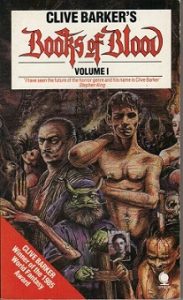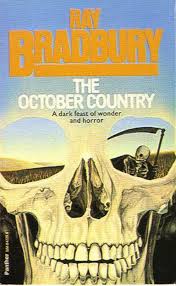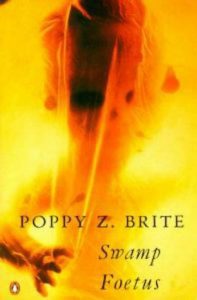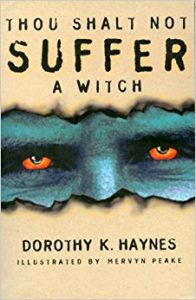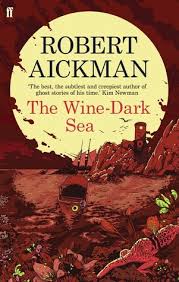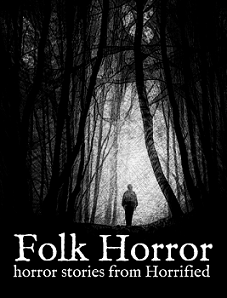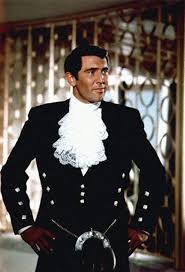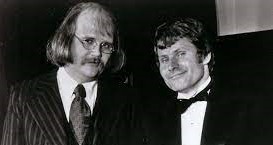
From horrornews.net
Another slightly-updated reposting for Halloween… I originally wrote this in 2013, just after James Herbert’s death.
It’s fair to say that, back in the 1970s, the English novelist James Herbert increased literacy levels substantially among young males who otherwise wouldn’t have opened a book in their entire lives. Not that Herbert, who died in 2013, ever got any thanks from Britain’s educators. His X-rated novels of apocalyptic horror in the shabbier parts of 1970s London were the sort of items you furtively traded with your mates in school playgrounds, away from the prying and prudish eyes of teachers.
I was 13 when I bought a copy of Herbert’s second novel The Fog (1975), drawn by an irresistible reviewer’s comment on its back cover: “For goodness sake don’t leave this on Aunt Edna’s chair!” An accompanying quote from the book itself was good too: “Out of the yellowish fog a man appeared. His eyes were fixed straight ahead and his lips were frozen in a smile. In his hands he carried the severed, still bleeding head of his wife.” A few mornings later, sitting in my form class at school, I passed the book to the boy sitting next to me and instructed him to read a chapter that’d I’d read the previous evening. This was a chapter in which a group of boys at a posh boarding school go murderously insane and start beating and torturing their teachers to death.
I’d actually felt sick after reading that chapter, though by the next morning I was fortified and ready for more. Anyway, I spent the next five minutes smugly watching my classmate as the colour drained from his face. A final exclamation of disgust – “Yeee-uuuck!” – indicated that he’d reached the chapter’s last sentence. That would’ve been the bit where the snotty deputy headmaster gets castrated with a pair of hedge-clippers.
I should say at this point that it wasn’t just teenage boys who were into Herbert’s novels. For I remember a girl in my class called Alex Stassino who once, admirably, grossed out her female friends by reading aloud the description of the mass suicide at the start of Herbert’s 1980s novel The Dark.

© New English Library
Herbert’s first book was The Rats in 1974. Despite a hostile review in the Observer by a young Martin Amis, who considered the violence in its pages “enough to make a rodent retch… and enough to make any human pitch the book aside,” the Great British public bought it in droves. (Before The Rats’ publication, Herbert had worked at the same advertising agency as Amis’s chum Salman Rushdie.) Though rats certainly weren’t new in horror fiction and films, and even though, like all his work, it was essentially pulp fiction, Herbert’s novel had two major selling-points.
Firstly, as the son of a fruit seller in London’s East End and someone who’d grown up around the corner from Reggie and Ronnie Kray, Herbert clearly had first-hand experience of the character-types and the localities in his book. The story reeked of gritty and seedy authenticity as the rats – a strain of giant, mutant flesh-eaters – swarmed around disused canals, derelict buildings and plots of waste ground, preying on winos, down-and-outs, grubby comprehensive school kids and Jamaican immigrants working in the London tube. I should say that, later in the book, they graduated to eating middle-class people too. Secondly, Herbert’s approach to horror was a different one from that used by earlier British horror writers, such as the gentlemanly and clubbable Algernon Blackwood or Dennis Wheatley. Unlike them, he left nothing to the imagination.
The Rats was followed by The Fog, which recounts what happens when a vaporous and madness-inducing chemical weapon leaks out of a laboratory and floats around southern England. By the way, I remember how in 1982, after I’d left school, I was backpacking and hitchhiking around central and northern Europe in the company of a similar-aged guy called Andy, who was from Stevenage. At one point, Andy-from-Stevenage and I got into a furious argument about The Fog. By then we’d spent whole days waiting around entry roads onto various Autobahns without getting lifts and we’d managed to argue furiously about everything under the sun. Andy-from-Stevenage’s beef with The Fog was that it was silly. Especially silly, he reckoned, was the bit in it where an airline pilot goes murderously insane and, to get revenge on his wife’s lover, flies his passenger-filled jet-plane off course and smack-bang into a London skyscraper where that lover works.
“Jet-planes flying into skyscrapers,” raged Andy-from-Stevenage, “that’s too far-fetched! That’d never happen in real life!”

© New English Library
In 1976, Herbert penned his first novel of the paranormal, The Survivor. This had supernatural forces unleashed in the Berkshire town of Windsor after a devastating plane-crash there. One set-piece in the novel describes nearby Eton College, the real-life alma mater of Boris Johnson and David Cameron, succumbing to a demonically-orchestrated fire. Along with the gory boarding-school episode in The Fog, this suggests that working-class Herbert had a low opinion of England’s private-education system.
Meanwhile, The Spear (1978) was an updating of those old Dennis Wheatley occult thrillers like The Haunting of Toby Jugg and They Used Dark Forces, where the Nazis dabbled in black magic to help their war effort. For topicality, Herbert threw the Arab-Israeli conflict into the mix. Between The Survivor and The Spear, he wrote Fluke, an atypical fantasy story narrated by a dog suffering from troubling flashbacks to a previous life in which he’d been a man. Eventually, he meets a wise badger who explains to him that, basically, the Buddhists had got it right. Even Fluke contains streaks of grotty Herbert realism, though, with his canine characters spending their time hanging around London junkyards, eating garbage and getting down-and-dirty with on-heat bitches.
Herbert was not initially popular among traditional British horror writers and fans, no doubt because he upset cosy and middle-class notions of what horror should be about. For somebody steeped in classic British tales of the uncanny like Charles Dickens’ The Signalman (1866) or M.R. James’s Oh Whistle and I’ll Come to you, my Lad (1904), being subjected to the gnawed-off faces and exploding heads of The Rats and The Fog was probably akin to how bearded, cerebral fans of progressive-rock bands like Emerson, Lake and Palmer, Genesis and Yes felt in 1977, when they first heard Never Mind the Bollocks, Here’s the Sex Pistols played loud.

© New English Library
It didn’t help Herbert’s image that his books’ success spawned a wave of badly-written and even bloodier imitators. In his wake, a whole paperback sub-genre became known in the book trade as ‘nasties’. This was years before the term was used in relation to films, as in Britain’s ‘video-nasty’ hysteria of the early 1980s. Among the writers cashing in were Shaun Hutson, whose breakthrough novel was Slugs (1982). This began with the yummy line: “The slug’s eye stalks waved slowly as it moved towards the crimson lump on which several of its companions were already feeding.” There was also Guy N Smith, who was both a tweedy pipe-smoking countryside game expert and a schlock-horror writer. When he wasn’t writing novels about giant carnivorous crabs – Night of the Crabs (1976), Killer Crabs (1978), Crabs on the Rampage (1981) – he was penning non-fiction tomes like Ferreting and Trapping for Amateur Gamekeepers (1976) and Moles and their Control (1980). Actually, I love the idea of Guy N. Smith (who, alas, passed away from Covid-19 at the end of last year) even if I never cared much for his books.
It wasn’t until 1981, when Stephen King wrote Danse Macabre, his non-fiction study of the horror genre, that Herbert finally got some respect in the field. In Danse Macabre, King said approvingly of Herbert that he “does not just write, he puts on his combat boots and goes out to assault the reader with horror.”
Around the early 1980s I lost interest in James Herbert, largely, I’m sure, because I was no longer a sensation-hungry teenager. The Dark (1980) seemed merely a supernatural retread of The Fog, while Lair (1979) was a perfunctory sequel to The Rats. I have to say, though, that his third Rats novel, Doman (1984), which was set in a near-future London after it’d been decimated by a nuclear attack, was about the bleakest and most gruelling thing I’d ever read. Even in Cormac McCarthy’s The Road (2006), the human survivors of the holocaust didn’t have to contend with giant carnivorous rodents. And during the 1980s and 1990s, Herbert’s books became increasingly concerned with supernatural themes and lacked the lethal edge of his earlier eco-horror ones. That said, people whose opinions I respect say that Creed (1990) and The Others (1999) are good.
Those 1970s novels could’ve become great films. Indeed, they appeared during a time when directors like Gary Sherman, who made 1972’s Deathline, and Pete Walker, who made 1974’s Frightmare, were moving British horror movies away from the realm of gothic costume dramas and making them more contemporary, nihilistic and graphic, just as Herbert was doing in fiction. But soon afterwards, the British film industry all-but-disappeared down the plughole. John Hough, who’d directed the well-regarded Twins of Evil (1972) and Legend of Hell House (1973), hoped to make a film of The Dark, with a script by the famous horror-movie starlet Ingrid Pitt (who was a good friend of Herbert’s), but the project came to nothing. The Rats and Fluke were eventually filmed in 1982 and 1995, but in North America, losing the working-class London ambience that’d made the books distinctive. The Survivor was filmed in 1981 in Australia and thus it didn’t work either.

© New English Library
Ironically, the film with the strongest flavour of his books isn’t a James Herbert adaptation at all. Danny Boyle’s 28 Days Later (2002) – at least during its first half, when Cillian Murphy and Naomie Harris are stalked through a deserted London by victims of a ‘rage’-inducing virus – feels like The Fog without the fog. And during the scene in the tunnel, where Murphy, Harris and Brendan Gleason encounter a tide of scuttling rats, it’s obvious which 1970s horror paperback Boyle and his scriptwriter Alex Garland are tapping into.
Incredibly, considering the unsavoury things that went on in his books, the establishment saw fit to honour Herbert shortly before his death by giving him the Order of the British Empire. Perhaps somebody in the Royal Family had accidentally left a copy of The Fog on the Queen’s chair. And perhaps the Queen had enjoyed the bit with the hedge-clippers.
A while back, I read a James Herbert novel for the first time in decades. This was after I read a piece by the Guardian columnist Charlie Brooker, in which Brooker suggested that Herbert’s novel ’48 (1996) was better than James Joyce’s Ulysses (1922). He was joking, of course, but knowing Brooker I suspect he was only half-joking. My curiosity piqued, I tracked down a copy of ’48, which is set in a parallel universe in the year 1948, after London has been devastated by a ‘blood plague’ unleashed by Hitler in the final days of World War II. A tiny band of uninfected survivors are pursued around the empty, crumbling city by a larger band of infected and vampire-like survivors, who believe that by consuming the uninfected ones’ blood they can rid themselves of the plague before it kills them. The bad guys are led by a former associate of Oswald Mosley and style themselves on Mosley’s blackshirts.
Reading like a cross between Richard Matheson’s I Am Legend and an Alastair Maclean war novel, I was surprised at how enjoyable ’48 turned out to be. Admittedly, Herbert’s meat-and-two-veg prose style would never win any literary awards. But it was hectically paced, it had just enough character development to maintain one’s interest in the players, its descriptions of a devastated 1940s London were convincing and it made shameless use of the city’s landmarks – Buckingham Palace, Trafalgar Square, the Tower of London, Tower Bridge – when staging its action set-pieces.
It would, incidentally, make a pretty good film. Are you reading this, Danny Boyle?

© HarperPrism

